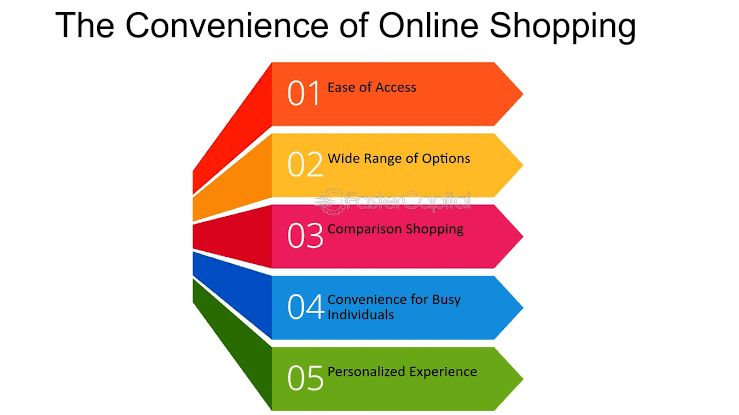
How Far Are We from True Artificial General Intelligence (AGI)?
Artificial General Intelligence (AGI) represents the next frontier in AI—machines with the ability to think, reason, and learn like humans. Unlike narrow AI, AGI would be versatile and adaptable, performing diverse tasks without specific programming. While companies like OpenAI and DeepMind are exploring AGI, it remains a distant goal due to the immense technical and ethical challenges. Machine learning advances help, but AGI requires breakthroughs in understanding human cognition.
✨ Raghav Jain

Introduction
Artificial Intelligence (AI) has made incredible strides in recent years—from voice assistants like Siri and Alexa to AI models like ChatGPT that can write poetry, code software, and hold realistic conversations. Yet, despite these advances, what we see today is Narrow AI, designed to excel at specific tasks.
But there’s a much bigger dream in the AI world: Artificial General Intelligence (AGI)—an AI system capable of understanding, learning, and reasoning across any task that a human can perform, and potentially more. AGI would not just mimic human behavior; it would possess the ability to think, plan, adapt, and apply knowledge across a wide variety of domains.
So, how close are we to reaching this milestone? Is it around the corner, or a fantasy far in the future? In this article, we’ll dive into what AGI truly means, how it differs from today’s AI, the current progress and roadblocks, and what the future might look like when (or if) we achieve AGI.
The year 2025 finds humanity in a state of both fervent anticipation and cautious contemplation regarding the pursuit of Artificial General Intelligence (AGI), a hypothetical form of AI possessing human-like cognitive abilities across a wide range of tasks, exhibiting the capacity to understand, learn, and apply knowledge in a generalized way, much like a human can reason, plan, solve problems, think abstractly, comprehend complex ideas, learn quickly, and learn from experience. The question of how far we are from achieving this milestone remains one of the most profound and actively debated topics within the fields of artificial intelligence, computer science, neuroscience, and philosophy, with opinions ranging from optimistic predictions of imminent breakthroughs to more skeptical views suggesting that true AGI is still decades, if not centuries, away, or may even be an unattainable goal with our current understanding and technological capabilities. The current landscape of AI is dominated by Artificial Narrow Intelligence (ANI), also known as weak AI, which excels at specific tasks such as image recognition, natural language processing, and game playing, often surpassing human performance in these limited domains, as evidenced by the widespread adoption of AI in various industries for automation, data analysis, and customer service, but these systems lack the general intelligence and adaptability of humans, highlighting the significant gap that still needs to be bridged to reach true AGI. This exploration delves into the multifaceted question of our proximity to AGI in 2025, examining the progress made in AI, the key challenges that remain, the various perspectives on the timeline for its potential arrival, and the very definition and characteristics of what constitutes true artificial general intelligence.
The progress in AI in recent years has been nothing short of remarkable, particularly in areas like deep learning, natural language processing, and computer vision, leading to the development of sophisticated models capable of generating human-like text, understanding and responding to spoken language, and identifying objects and patterns in images with increasing accuracy, as demonstrated by the capabilities of large language models (LLMs) like GPT-4 and the advancements in autonomous driving technologies, which showcase the power of current AI to perform complex tasks that were once thought to be the exclusive domain of human intelligence. These advancements are fueled by increasing computational power, the availability of vast amounts of data, and the development of novel algorithms and architectures, pushing the boundaries of what AI can achieve in specific domains, and yet, despite these impressive feats, these AI systems remain fundamentally narrow in their capabilities, lacking the common sense reasoning, abstract thinking, and transfer learning abilities that characterize human intelligence, underscoring the significant leap required to achieve AGI, which would necessitate not just enhanced performance in specific tasks but a fundamental shift towards more generalized and human-like cognitive abilities.
However, the path towards true AGI is fraught with significant challenges that researchers are actively grappling with in 2025, with one of the primary hurdles being the very nature of human intelligence itself, which is still not fully understood, encompassing a complex interplay of reasoning, emotion, consciousness, creativity, and adaptability that is difficult to replicate in machines, as current AI models, while adept at processing information and identifying patterns, lack genuine understanding and awareness of the world in the way humans do, struggling with tasks that require common sense, intuition, and the ability to generalize knowledge across different contexts. Another major challenge lies in the development of learning algorithms that can acquire and apply knowledge across diverse domains without extensive task-specific training, exhibiting the kind of transfer learning and generalization abilities that are natural to humans, as current machine learning approaches often require vast amounts of labeled data and struggle to adapt to novel situations or apply knowledge learned in one domain to another, highlighting the need for more robust and flexible learning paradigms to achieve AGI. Furthermore, ethical and safety considerations loom large as we move closer to more advanced AI, with concerns about ensuring that AGI systems align with human values, avoid unintended consequences, and operate safely and reliably, particularly as they become more autonomous and capable, necessitating the development of robust ethical frameworks and safety mechanisms to guide the development and deployment of AGI.
The timeline for achieving true AGI remains highly uncertain and is a subject of intense debate among AI experts, with some optimistic voices predicting its arrival within the next few decades, perhaps even within the next few years, citing the rapid pace of progress in AI and the potential for unforeseen breakthroughs, as evidenced by recent surveys indicating a shortening of estimated timelines for AGI development among some AI researchers and industry leaders. Others hold a more cautious view, suggesting that the challenges are far more complex than currently understood and that true AGI may still be decades or even centuries away, emphasizing the fundamental differences between current AI and human intelligence and the lack of a clear roadmap to bridge this gap. It is also important to consider the varying definitions of AGI, as some researchers focus on achieving human-level performance across all cognitive tasks, while others emphasize the importance of consciousness, self-awareness, or other aspects of human intelligence, leading to different benchmarks and timelines for its potential realization. The lack of a universally agreed-upon definition and metrics for AGI further complicates the task of predicting its arrival.
Defining true Artificial General Intelligence (AGI) is itself a complex and evolving endeavor, with various perspectives on what constitutes human-level intelligence in a machine, as it generally refers to a hypothetical AI system that possesses the ability to understand, learn, and apply knowledge across a wide range of tasks 1 at a level comparable to 2 or exceeding human cognitive abilities, exhibiting characteristics such as the ability to reason, solve problems, think abstractly, comprehend complex ideas, learn quickly, and learn from experience. Unlike current narrow AI, which is designed for specific tasks, AGI would possess a general intelligence that allows it to perform any intellectual task that a human can, demonstrating a level of adaptability and flexibility that is currently beyond the reach of existing AI systems, and some researchers also emphasize the importance of consciousness, self-awareness, and subjective experience as key components of true AGI, while others focus more on functional capabilities and the ability to perform a wide range of cognitive tasks effectively. The pursuit of AGI is not just about building more powerful AI systems but about creating machines that can truly understand and interact with the world in a human-like way, bridging the gap between narrow, task-specific intelligence and the generalized intelligence that defines human cognition. In conclusion, while AI has made remarkable strides in recent years, bringing us closer to achieving human-level performance in specific domains, the path to true Artificial General Intelligence remains a complex and uncertain one, with significant challenges in replicating the multifaceted nature of human intelligence, developing more generalized learning algorithms, and ensuring the ethical and safe development of such powerful systems, and while predictions about the timeline for AGI vary widely, the pursuit of this ambitious goal continues to drive innovation in AI research, pushing the boundaries of what machines can do and prompting deeper reflections on the very nature of intelligence itself.
What Is Artificial General Intelligence (AGI)?
AGI refers to a type of AI that has human-like cognitive abilities. It can perform any intellectual task that a human can do, without needing to be retrained or reprogrammed.
Unlike narrow AI (or “weak AI”), which is built to handle specific problems (like translating languages or playing chess), AGI would:
- Learn from experience like humans do
- Transfer knowledge from one task to another
- Reason and make decisions in unfamiliar situations
- Understand emotions, intent, and abstract concepts
- Reflect and improve itself without direct human intervention
In short, AGI would not just respond to prompts—it would understand the world, adapt to it, and act autonomously across countless scenarios.
Current State of Artificial Intelligence
AI has undoubtedly evolved rapidly in the past decade. Modern models can:
- Recognize speech and faces with high accuracy
- Translate dozens of languages in real-time
- Diagnose diseases from medical scans
- Write essays, generate music, and compose images
- Play complex games like Go and Dota 2 better than humans
However, these systems still fall under narrow AI. Even advanced models like GPT-4 (and future GPT-5) lack true understanding, self-awareness, or cross-domain intelligence. They are statistical pattern matchers, not independent thinkers.
Despite appearing intelligent, they don’t have goals, consciousness, or long-term memory in the human sense.Where Are We Now on the Path to AGI?
Though AGI remains elusive, we are making measurable progress. Here are some of the key advancements:
1. Scaling of Language Models
Large Language Models (LLMs) like GPT-4, Claude, and Gemini have shown that scaling data and compute power leads to better performance in language, reasoning, and general knowledge. This has sparked the belief that AGI may emerge gradually as models continue to scale and become more integrated.
2. Multi-modal AI
We now have models that can handle text, images, audio, and video inputs simultaneously. This is essential for AGI, which would need to process information like a human—through multiple senses and mediums.
3. Meta-Learning and Few-Shot Learning
Some systems can now learn new tasks with minimal data—a capability once considered uniquely human. This suggests we're beginning to close the gap between narrow AI and general intelligence.
4. Neural-Symbolic Systems
Combining the flexibility of neural networks with the logic and reasoning abilities of symbolic AI is an emerging approach. It could allow machines to reason more like humans while still learning from data.
Challenges Blocking the Path to AGI
Despite these advances, major obstacles still exist:
1. Lack of Common Sense
Today’s AI models often make basic errors that no human would. They don’t truly understand the world—they predict what should come next based on patterns. AGI requires real-world knowledge and intuition, which AI currently lacks.
2. Transfer Learning Limitations
AGI should learn something in one domain and apply it elsewhere—like learning how to climb a tree and then using similar strategies to climb a mountain. Current AI struggles with such transfer.
3. Understanding Context and Intent
Machines today can interpret commands, but they don’t understand human motives or intent in a deep way. AGI would need emotional intelligence, empathy, and context awareness.
4. Ethics and Alignment
Even if we could build AGI, aligning it with human values is another challenge. An unaligned AGI could act in ways that are harmful or unpredictable, even without malice.
5. Computational Power and Cost
AGI will likely require massive computing infrastructure and energy. While quantum computing and better hardware may help, we’re not there yet.
Predictions: When Might We Achieve AGI?
Experts are divided on the timeline for AGI:
- Optimists like Ray Kurzweil predict AGI will arrive by 2030.
- Moderates suggest somewhere between 2040–2060.
- Skeptics argue we may never achieve true AGI, or not without a breakthrough in understanding consciousness and intelligence itself.
According to a 2022 survey by AI researchers, the median prediction for AGI was 2059—but with wide uncertainty.
Ultimately, it depends on:
- Technological breakthroughs
- Understanding human cognition
- Safe design and ethical frameworks
- Global cooperation in development
How AGI Will Transform Society
Once achieved, AGI will not just be a technological achievement—it will be a civilizational turning point. Some expected impacts include:
1. Redefining Jobs and Work
AGI could automate most human labor, including creative, managerial, and intellectual tasks. This raises questions about:
- Job displacement
- Universal basic income
- Redefining human purpose
2. Revolutionizing Science and Innovation
AGI could accelerate discoveries in physics, biology, mathematics, and more. It could run millions of simulations daily, helping humanity solve:
- Climate change
- Disease
- Space travel
3. Ethical and Moral Questions
With AGI, we face questions like:
- Does an AGI deserve rights?
- Who controls AGI?
- Can AGI make moral decisions?
- How do we prevent misuse?
4. Superintelligence and Singularity
Some believe AGI will lead to Artificial Superintelligence (ASI)—a self-improving entity far smarter than any human. This could either be:
- Humanity’s greatest invention
- Or, if mishandled, an existential threat
Preparing for AGI: What Needs to Be Done?
While we may not know the exact arrival date, preparation is essential. Key steps include:
- Research in AI safety and alignment
- Developing ethical guidelines and international regulations
- Transparency in AGI development
- Public education on AI impact
- Collaboration over competition
Companies like OpenAI, DeepMind, and Anthropic are already investing in safe AGI development, but global cooperation is vital to avoid potential catastrophe.
Conclusion
Artificial General Intelligence represents a frontier full of promise—and peril. While we’re still some distance away from creating truly human-level machines, the path toward AGI is becoming clearer with each technological leap.
Progress in deep learning, cognitive science, neuroscience, and computing power brings us closer to an intelligence that may one day rival, or surpass, our own. But building AGI isn’t just about technical achievement—it’s about responsibility, alignment, and vision for the kind of future we want.
Whether AGI arrives in 10 years or 100, its development will shape the destiny of humanity. The question is not just how far we are from AGI—but whether we are ready for it when it arrives.
Q&A Section
Q1: What is Artificial General Intelligence (AGI)?
Ans: AGI refers to a type of AI that can understand, learn, and apply knowledge across a wide range of tasks, just like a human being, without being task-specific.
Q2: How is AGI different from current AI systems?
Ans: Current AI systems (narrow AI) are designed for specific tasks like voice recognition or playing chess, whereas AGI would perform any intellectual task that a human can do.
Q3: Why is achieving AGI so challenging?
Ans: AGI requires deep understanding of human cognition, emotion, and reasoning, which are complex and not yet fully understood scientifically or computationally.
Q4: What milestones have we achieved so far in the journey toward AGI?
Ans: We've developed powerful narrow AI models like GPT and AlphaGo, but none yet possess general reasoning, self-awareness, or human-level understanding.
Q5: What role does machine learning play in developing AGI?
Ans: Machine learning is a foundational tool for AGI, helping systems learn from data. However, AGI will also require reasoning, memory, adaptability, and abstraction beyond current ML capabilities.
Q6: Are there any companies or organizations working on AGI?
Ans: Yes, leading efforts include OpenAI, DeepMind, and IBM, all of which are researching pathways to AGI through advanced neural networks and cognitive architectures.
Q7: What ethical concerns are associated with AGI development?
Ans: AGI raises serious ethical concerns like control, misuse, unemployment, surveillance, and the possibility of AI acting against human interests.
Q8: What would be the impact of AGI on society if achieved?
Ans: AGI could revolutionize science, medicine, education, and economics, but also pose risks if misaligned with human values or misused by powerful entities.
Q9: How close are we realistically to achieving AGI?
Ans: Experts are divided—some believe AGI may emerge in the next 20-50 years, while others think it may take much longer due to its complexity.
Q10: Can we trust AGI once it is developed?
Ans: Trust will depend on how AGI is designed, trained, and governed. Transparent, ethical development and strict safety protocols will be essential for trust.
Similar Articles
Find more relatable content in similar Articles

From Classroom to Career: App..
Skill-building apps help stud.. Read More

The Rise of Green Tech: Innova..
Green technology is revolutio.. Read More

E-Commerce and the Convenience..
E-commerce has revolutionized .. Read More

Tech vs Nature: Can They Coexi..
The debate of "Tech vs Nature".. Read More
Explore Other Categories
Explore many different categories of articles ranging from Gadgets to Security
Smart Devices, Gear & Innovations
Discover in-depth reviews, hands-on experiences, and expert insights on the newest gadgets—from smartphones to smartwatches, headphones, wearables, and everything in between. Stay ahead with the latest in tech gear
Apps That Power Your World
Explore essential mobile and desktop applications across all platforms. From productivity boosters to creative tools, we cover updates, recommendations, and how-tos to make your digital life easier and more efficient.
Tomorrow's Technology, Today's Insights
Dive into the world of emerging technologies, AI breakthroughs, space tech, robotics, and innovations shaping the future. Stay informed on what's next in the evolution of science and technology.
Protecting You in a Digital Age
Learn how to secure your data, protect your privacy, and understand the latest in online threats. We break down complex cybersecurity topics into practical advice for everyday users and professionals alike.
© 2025 Copyrights by rTechnology. All Rights Reserved.